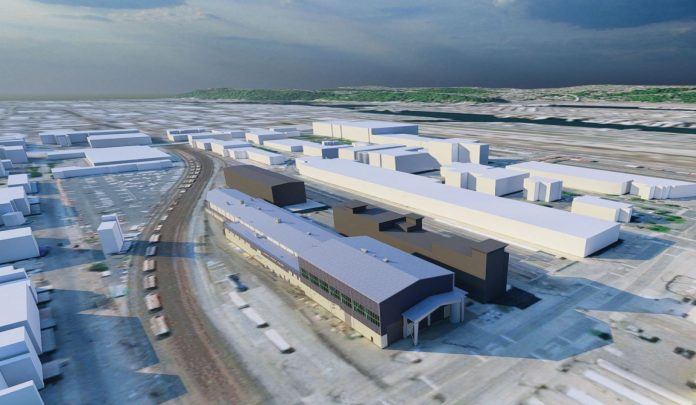Amtrak has nearly $300 million worth of upgrades queued for its SoDo yard, supporting new Airo trains entering service in 2026.
Last week, Amtrak announced it will be upgrading its King Street Yard with a new maintenance facility after procuring an Infrastructure Investment and Jobs Act award totaling nearly $300 million. The improved railyard will not necessarily mean an immediate expansion of Amtrak Cascades service, but it will be poised to support expansion at a future date, Amtrak spokesperson Kelly Just said.
Amtrak expects to quickly advance the project through permitting, into construction, and toward a targeted 2027 completion date.
“We expect to break ground in spring 2025,” Just told The Urbanist. “The brand-new maintenance building will add service, cleaning, maintenance and inspection functions for future Amtrak Airo trainsets earmarked for Cascades trains (which operate between Portland and Vancouver, Canada). The new trainsets are scheduled to begin service in 2026, replacing the trains currently operating on this route and setting the stage for future service expansion opportunities to be determined at a later date.”
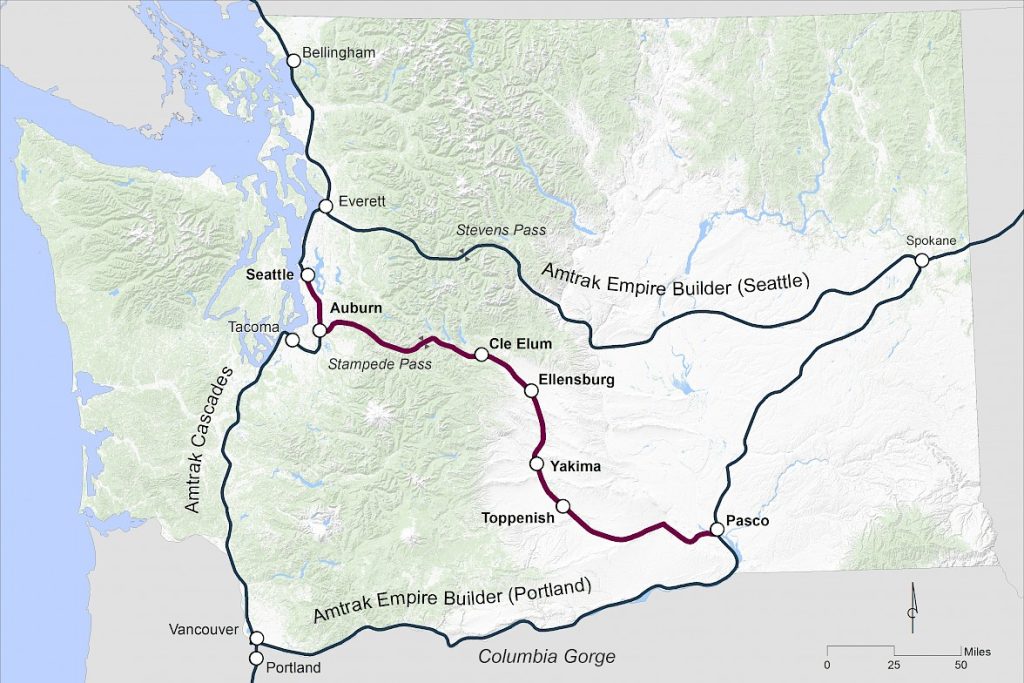
The King Street Yard is located about one mile south of King Street Station in SoDo and hosts more than 200 daily train movements, according to Amtrak. At the bustling facility, Amtrak employees maintain and clean the locomotives and passenger railcars that operate on three sperate Amtrak services, plus Sound Transit’s Sounder service:
- Amtrak Cascades – daily Pacific Northwest trips between British Columbia, Washington and Oregon
- Coast Starlight – daily connections between Los Angeles and Seattle
- Empire Builder – daily connections between Chicago and the Pacific Northwest
- Sounder – this Sound Transit service operates between Lakewood and Seattle (via Tacoma) and between Everett and Seattle, with additional stops in between.
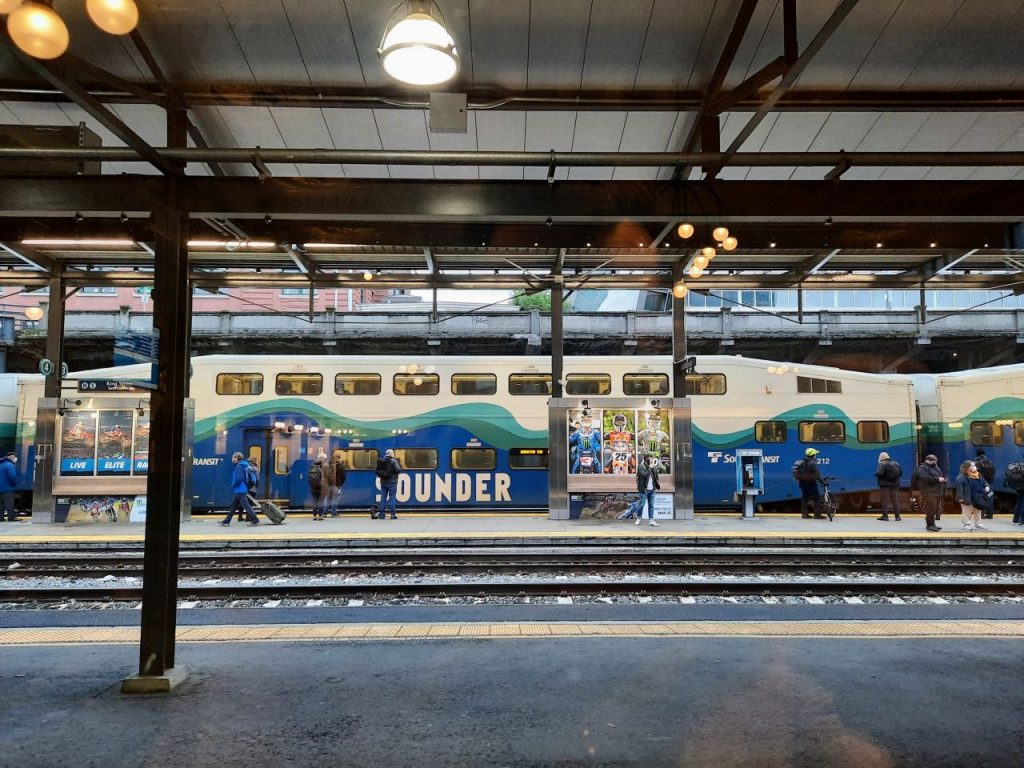
An Amtrak press release pledges the new facility will feature “a world-class design and modern amenities that will transform the travel experience.” When the project is completed, the rail yard will feature a new two-bay maintenance and inspection facility and a new service and cleaning bay. With the expanded maintenance capacity, Amtrak should be capable of quicker turnarounds to get trains back in service following repairs or cleaning.
PCL Construction Services, Inc. will lead design and construction of the new facility, under supervision of the facilities team within Amtrak’s Capital Delivery department.
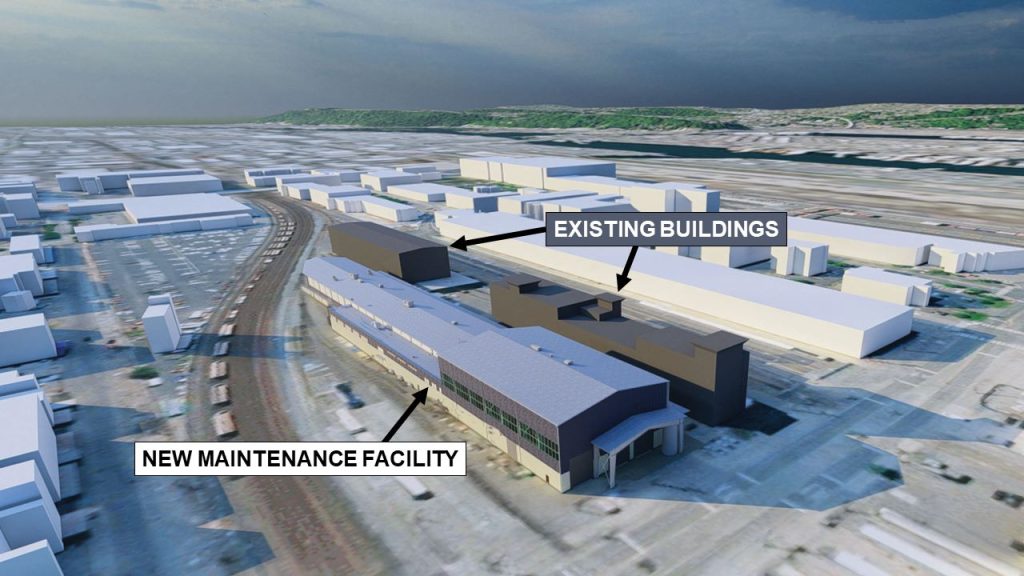
Amtrak framed the project as part of its “Net-Zero Strategy” to source 100% carbon-free electricity by 2030 and eliminate climate pollution from its trains and facilities by 2045. The new facility will use renewable electricity and operate without the use of fossil fuels for heating, improving a transportation option that is “already one of the most sustainable ways to travel,” Amtrak said.
Federal Railroad Administration (FRA) Administrator Amit Bose celebrated the milestone — and alluded to the fact upgrades to Amtrak facilities nationwide have been long overdue.
“Thanks to the hard work of the Biden-Harris Administration and the Bipartisan Infrastructure Law’s historic funding, we’re finally addressing long-standing rail needs, advancing major projects, and upgrading vital infrastructure across the country, including Amtrak stations and facilities like the King Street Coach Yard,” Bose said. “The new Seattle facility and rail yard will benefit riders on several Amtrak routes, including Amtrak’s Cascades route, and upgrades will ensure it is positioned for future growth. I’m grateful to the members of Congress and State of Washington who have supported this project and the infrastructure law.”
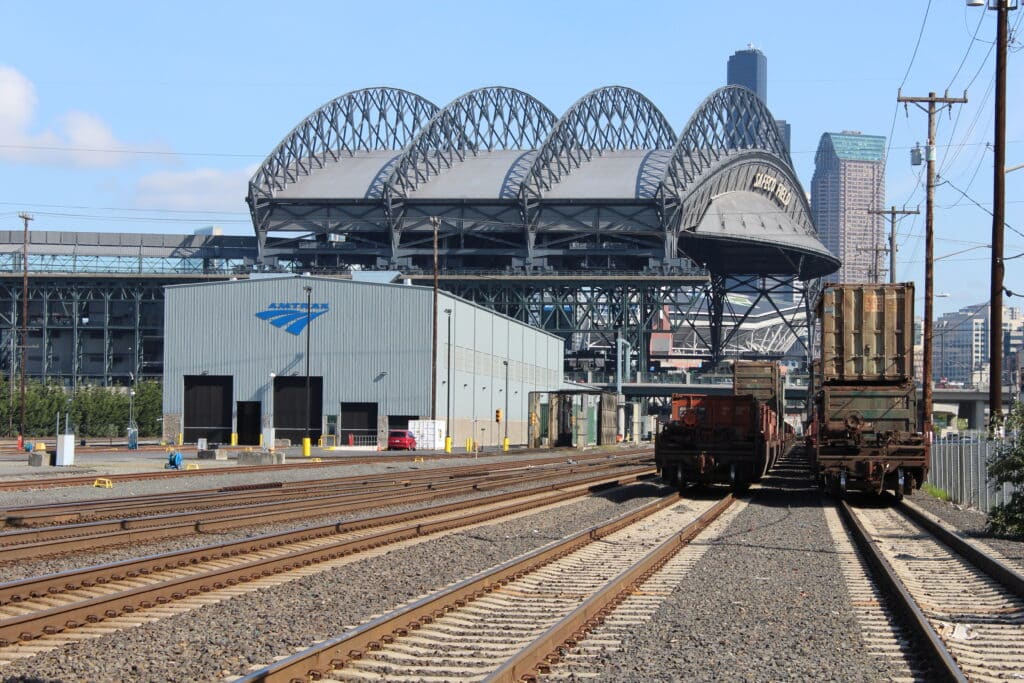
Bose pledged continued efforts to “modernize and expand America’s passenger rail network.”
Work to upgrade King Street Yard also dovetails with a study looking at eliminating the existing at-grade rail crossing at South Holgate Street, given plans to expand the number of track crossings near an already problematic intersection. Seattle won a $2 million FRA grant to analyze whether the street can be kept open for people walking and biking through the area while minimizing conflicts at the busy rail crossing. The $100 million South Lander Street overpass to the south was already built with the potential expansion of the rail yard in mind.
Overall, President Joe Biden’s $1.2 trillion infrastructure bill, passed in 2021, includes $66 billion for passenger and freight rail, representing largest monetary investment in rail in American history.
“I was proud to support the Bipartisan Infrastructure Law and am thrilled to see this major investment coming to our region as a result,” Congresswoman Pramila Jayapal said in a statement. “This funding will help to better connect the Pacific Northwest and ensure that travelers will better be able to get where they’re going – quickly and conveniently.”
Biden’s penchant to ride trains and support Amtrak over the course of his career earned him the moniker “Amtrak Joe.” His campaign had pledged to jumpstart high speed rail expansion across the country. When it comes to high speed service, the infrastructure bill primarily focused on stabilizing the troubled California High Speed Rail project and upgrading the Acela corridor between Washington D.C. and Boston. The Infrastructure Investment and Jobs Act did include planning funds for other high speed rail corridors, as well as funding to look at reviving some long-dormant Amtrak routes.
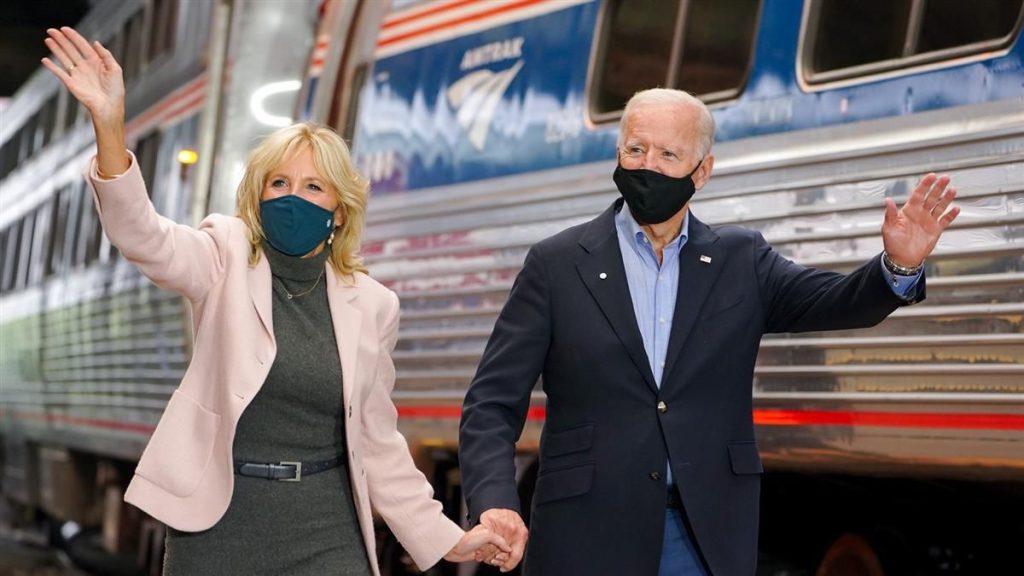
The states of Washington and Oregon along with British Columbia have been studying a Cascadia high speed rail line to connect their major metropolitan areas. Preliminary studies have indicated the project, while costly to construct, could potentially operate at a profit once built and would outperform I-5 freeway expansion as a means of expanding travel capacity between the states.
The FRA issued a $1 million grant to help the region continue early high speed rail planning, but Cascadia’s bid for a larger $198 million grant to advance the project farther into early design came up short in 2023.
This early in the process, it’s unclear if a prospective high speed rail line would use King Street Station or a brand new facility in Seattle or elsewhere. For example, one early study alternative opted to take a route through the Eastside and stop in Bellevue rather than Seattle.
For now, Amtrak riders have new top-of-the-line Airo trainsets to look forward to, which will be maintained in Amtrak’s spiffy expanded SoDo facility in a few years time.
Doug Trumm is publisher of The Urbanist. An Urbanist writer since 2015, he dreams of pedestrian streets, bus lanes, and a mass-timber building spree to end our housing crisis. He graduated from the Evans School of Public Policy and Governance at the University of Washington in 2019. He lives in Seattle's Fremont neighborhood and loves to explore the city by foot and by bike.

